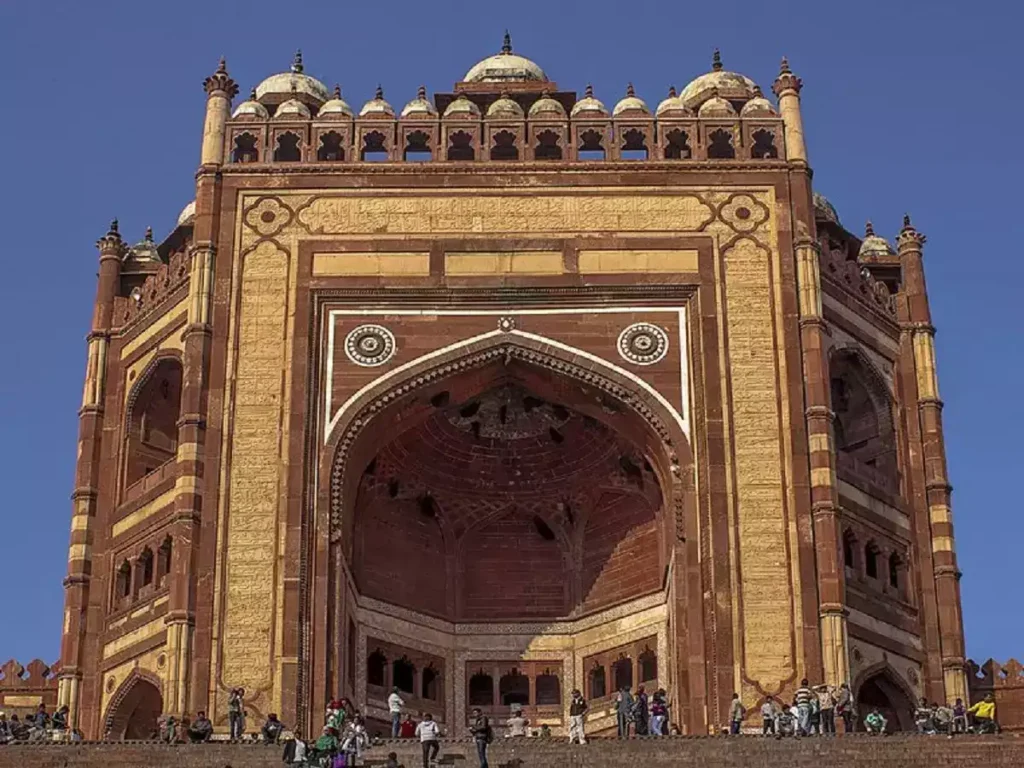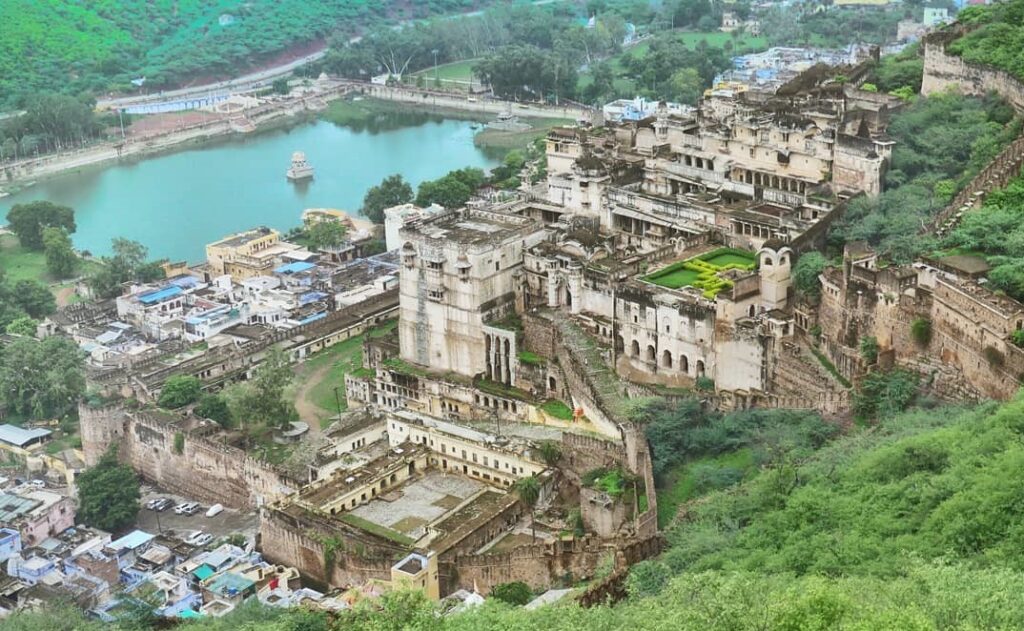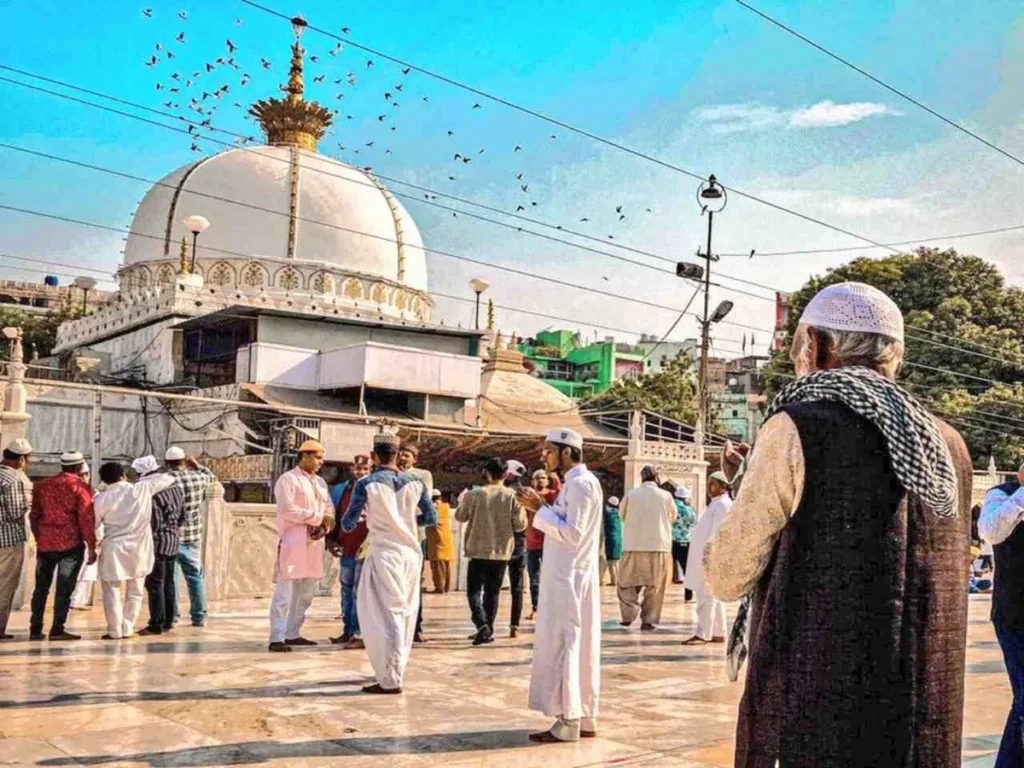Ajmer Sharif Dargah, located in the city of Ajmer in the Indian state of Rajasthan, is one of the most famous Sufi shrines in the world. Known for its historical and spiritual significance, it attracts millions of devotees and tourists every year. Visiting this sacred place is not only an opportunity to seek blessings but also to immerse oneself in the vibrant culture and essence of Rajasthan.

The Dargah, also known as Hazrat Khwaja Moinuddin Chishti Dargah, is the tomb of the revered Sufi saint, Hazrat Khwaja Moinuddin Chishti, who arrived in Ajmer in the 12th century and dedicated his life to the service of humanity. He was known for his teachings of love, peace, and harmony, and became an influential figure in spreading the message of Islam in the Indian subcontinent.

The architecture of the Dargah is a captivating blend of Mughal and Rajput styles, reflecting the fusion of cultures that can be witnessed in Ajmer. The main entrance, called the Buland Darwaza, is a massive structure adorned with intricate carvings and inscriptions from the holy Quran. As visitors enter through this magnificent gateway, they are instantly struck by a sense of awe and reverence.
The courtyard of the Dargah is a sprawling space filled with devotees, musicians, and vendors selling flowers and offerings. The atmosphere is lively and vibrant, with qawwali music filling the air. Qawwali is a devotional form of music that originated in the subcontinent and is an integral part of the Sufi tradition. The soul-stirring melodies and powerful lyrics create an aura of spirituality and devotion.

The highlight of any visit to the Ajmer Sharif Dargah is the opportunity to offer prayers at the tomb of Hazrat Khwaja Moinuddin Chishti. Devotees from all walks of life, irrespective of their religion or caste, come here to seek solace, blessings, and fulfill their wishes. It is believed that prayers made with a pure heart at the Dargah are answered, and many people have experienced miracles and divine interventions.
You can read our another post Spiritual Town of Rishikesh
One unique ritual at the Dargah is the offering of ‘Chadar’ and ‘Neem Sharbat.’ Devotees bring colorful silk or cotton cloth, known as Chadar, to offer at the shrine. It is a symbol of devotion and respect, and people believe that by offering a Chadar, their prayers will be heard and answered. Neem Sharbat, a sweet and refreshing drink made from the neem tree, is also distributed to the devotees. It is believed to possess healing properties and helps in purifying the mind and body.
Apart from the spiritual aspect, the Ajmer Sharif Dargah also offers a glimpse into the rich history and cultural heritage of Rajasthan. The Dargah complex houses several other attractions, including the Akbari Masjid, the Buland Manzil, and the Jama Masjid. These architectural marvels showcase the splendor of the bygone eras, with intricate craftsmanship and exquisite details.

Adjacent to the Dargah is the famous Ana Sagar Lake. This picturesque lake was built in the 12th century by Anaji Tomar, the grandfather of Prithviraj Chauhan, the famous Rajput king. Surrounded by lush gardens and beautiful pavilions, the lake offers a peaceful retreat from the bustling crowd at the Dargah. Visitors can enjoy boat rides, soak in the breathtaking views, and engage in quiet reflection.

Ajmer itself is a city with a rich cultural heritage and a fascinating blend of Hindu and Muslim influences. It is home to several other historical sites, such as the Adhai Din Ka Jhopra, Taragarh Fort, and Nasiyan Jain Temple. Exploring these attractions along with a visit to the Dargah provides a holistic experience, showcasing the diversity and harmony that Rajasthan stands for.
For food enthusiasts, the streets around the Dargah are a gastronomic delight. One can indulge in the flavors of Rajasthan, sampling mouth-watering dishes like Dal Baati Churma, Gatte Ki Sabzi, and Laal Maas. The local shops are also known for their traditional handicrafts, textiles, and jewelry, offering an opportunity to take back a piece of Rajasthan’s rich heritage.
In conclusion, a visit to the famous Ajmer Sharif Dargah in Ajmer is a soul-stirring experience that should not be missed. It not only offers an opportunity to seek divine blessings but also allows visitors to immerse themselves in the spirituality, history, and vibrant culture of Rajasthan. The mesmerizing architecture, the mystical qawwali music, the rituals, and the peaceful Ana Sagar Lake – all add up to a memorable journey of faith and discovery.
FAQ For The Famous Ajmer Sharif Dargah in Ajmer
Where is the famous Ajmer Sharif Dargah located?
The Ajmer Sharif Dargah is located in the city of Ajmer, Rajasthan, India.
How do reach Ajmer Sharif Dargah?
Ajmer is well-connected by road, rail, and air. The nearest airport is in Jaipur, about 130 kilometers away. Ajmer railway station serves as a major railhead. Several buses and taxis are also available for reaching Ajmer Sharif Dargah.
What is Ajmer Sharif Dargah famous for?
Ajmer Sharif Dargah is one of the most important pilgrimage sites in India for Muslims. It is the shrine of the Sufi saint Khwaja Moinuddin Chishti and holds great religious significance. People from different faiths visit the dargah to seek blessings and offer prayers.
Are there any dress code requirements to enter the dargah?
Yes, visitors are requested to dress modestly and cover their heads while entering the dargah premises as a mark of respect. Scarves and headgear are available for purchase near the entrance if needed.
Can non-Muslims enter Ajmer Sharif Dargah?
Yes, the dargah is open to people of all faiths. Non-Muslims are welcome and can visit the shrine, but it is important to maintain respectful behavior and follow the customs and traditions of the dargah.
What is the best time to visit Ajmer Sharif Dargah?
The dargah can be visited throughout the year, but it is especially crowded during major festivals like Urs and Ramadan. It is advisable to avoid peak times if you prefer a quieter experience.

